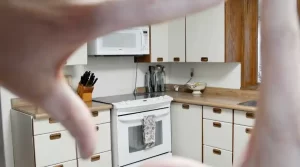Undertaking a home renovation can be an exciting yet challenging endeavor. While TV shows may depict it as a quick and effortless makeovers, the reality is that successful home renovations require careful planning and organization. This comprehensive guide will walk you through the process of organizing your home renovation, helping you save time, money, and your sanity.
Start With Design and Planning
Before diving into the physical aspects of the renovation, start with a clear design and plan. Whether it’s a rough sketch on a cocktail napkin or detailed architectural drawings, having a solid plan in place is crucial. Take the time to consider what you want to achieve with the remodel and ensure you have the necessary funding to support the project.
Create a renovation wishlist of tasks you can handle as DIY projects and those that would be requiring professional help. If you need contractors or subcontractors, you can begin your search at this stage.
Consider the Bigger Projects
Addressing significant projects first is essential, as they can impact subsequent tasks. Start with critical projects like roof replacement or repair, foundation fixes, and resolving water infiltration issues. Securing the foundation and making major repairs that weakened walls and beams should be top priorities.
Focus on keeping the house dry by repairing or replacing the roof and addressing damaged windows and siding. By taking care of these critical elements early on, you will safeguard your future renovation work.
Plan for Demolition
Demolition is a significant undertaking often overlooked by homeowners until the project begins. Prepare for demolition by renting a large container for waste disposal. Carefully demolish the sections of the house that will be replaced in later stages of the renovation. If you won’t be living in the house during the renovation, consider demolishing as much as possible.
Keep in mind that certain surfaces may be coated with lead-based paint or contain asbestos, especially in older homes. Exercise caution when demolishing such areas and consider seeking professional assistance for handling asbestos or lead-based paint.
Think About Structural Carpentry
Structural carpentry involves supporting other work during the renovation. This includes tasks like moving walls, constructing new ones, e.g. home additions, adding beams for additional support, and enlarging window openings. While some structural carpentry projects can be tackled by ambitious DIYers, others may require the expertise of a contractor.
Plan Out HVAC, Electrical, and Plumbing Jobs
Install HVAC, electrical, and plumbing systems when walls and ceilings are open. This stage allows for easier installation, as professionals can run ductwork for heating and cooling systems, as well as electrical and plumbing lines. Check local building regulations and codes to ensure only licensed professionals handle this part of the renovation.
Consider the Windows
Window installation is often a crucial part of home renovations. Installing new-construction or replacement windows can be a DIY project for some homeowners, but be mindful of warranties. Improper installation may void the manufacturer’s warranty, so, if you are having second thoughts, consider hiring a professional to ensure the job is done correctly.
Plan Out Insulation and Drywall
Before installing drywall, make sure to insulate the walls and attic properly. Different areas of the house may require various types of insulation. It’s essential to have an electrical and plumbing inspection before closing up the walls with drywall.
While hanging, mudding, and sanding drywall can be DIY projects, achieving a seamless surface may take practice and patience that can be provided by the experts.
Brush Up on Fine Carpentry Skills
Fine carpentry includes details like baseboards, molding, trim around windows and doors, and built-in elements like bookcases and cabinetry. These finishing touches add a polished look to your home.
Move on to Interior Painting, Wallpaper, and Other Finishing Work
Painting interior walls, hanging wallpaper, and other surface finishes should be done towards the end of the renovation process. Take care not to damage other areas while doing this work. Consider whether to paint before or after installing flooring to avoid potential issues.
Install Flooring
Choose the appropriate flooring for each room, such as laminate, hardwood, vinyl, tile, or carpet. Install the flooring as late as possible to protect it from damage during the renovation process.
Move on to the Exterior
Once the interior is nearing completion, it’s time to focus on the exterior. Install gutters and siding while ensuring doors and windows are secure. Now is also the time to consider external renovations like front porches or sunrooms, as well as separate structures like detached garages or swimming pools.
By following this organized approach to your home renovation, you can ensure a smoother and more successful project. For expert assistance and high-quality renovations, trust West Valley City General Contractors. Our team of professionals is dedicated to bringing your vision to life, ensuring your dream home becomes a reality. Contact us today to start your home transformation journey.










